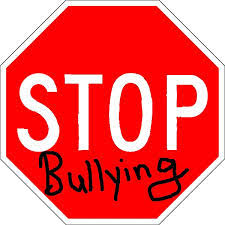It’s a staggering statistic; especially considering the many ways bullying can affect students’ wellbeing. Targeted children often suffer from poor performance in school, sleep issues, anxiety, and depression. And let’s not forget the students doing the bullying—they’re at a much higher risk for a whole host of issues that could extend into adulthood, ranging from violent behavior to substance abuse.
What can do you to make an impact? How can you create a climate that prevents bullying, but also put interventions in place that stop the behavior in its beginning stages?
Bullying is now being seen in children as young as 4 to 5 years old. When children bully without being educated or held accountable, they may learn that their behavior is acceptable.
There are basic types of abuse that fall within the definition of bullying; physical and verbal bullying, also referred to as relational bullying. Bullying can either be direct or indirect. Indirect bullying is more difficult to identify as it typically involves multiple aggressors, victims, and bystanders.
Physical bullying includes:
- Spitting
- Tripping/pushing
- Hitting/kicking/pinching
- Taking or breaking someone’s things
- Making mean or rude hand gestures
Verbal bullying includes:
- Name-calling
- Teasing
- Taunting
- Inappropriate sexual comments
- Threatening to cause harm
Emotional bullying includes:
- Leaving someone out on purpose
- Telling other children to not be friends with someone
- Spreading rumors about someone
- Embarrassing someone in public.
Few Ways to Prevent Bullying:
1. Teach kindness and empathy.
When students are able to approach ideas and problems from multiple perspectives, they’re less likely to bully others.
From the earliest ages, students should participate in activities that boost social-emotional learning
2. Create opportunities for connection.
Fostering a sense of community this can lower bullying incidents and facilitate healing for targeted students.
3. Identify ‘gateway behaviors.'
These indicators, called “gateway behaviors,” can be difficult to detect. But, if you can recognize them early on, there’s a chance you could prevent bullying behavior from developing down the road. Here are some of the key behaviors you should take notice of:
- Eye rolling
- Prolonged staring
- Back turning
- Laughing cruelly/encouraging others to laugh
- Name-calling
- Ignoring or excluding
- Causing physical harm
- Spying
- Stalking
While these behaviors may not be classified as bullying, putting interventions in place now could mitigate the likelihood of them growing into something more problematic.
Also, to help break this harmful cycle, here are a few questions for parents and guardians to ask themselves this summer:
• Does my child need a reset conversation about bullying and respect? Consider finding a quiet time to proactively discuss bullying with your child, recondition your child to engage respectfully with their peers with a focus on educating them about hurtful words and their impact.
• Does my child need to be educated and held accountable? If you learn that your child is bullying a peer, remember that education is paramount. If you haven’t had a proactive conversation with your child about bullying, take the time to discuss their actions, and explain the real meaning of what they’ve done in words they can understand
• Am I modeling good behavior at home? Children are deeply influenced by parental behavior. If you consciously or unconsciously use language that demeans women, reinforces gender stereotypes, or promotes unhealthy masculinity, children will learn that it’s acceptable. Look for weak points in your behavior, discuss them with your child, and then change your own behavior for the better.
